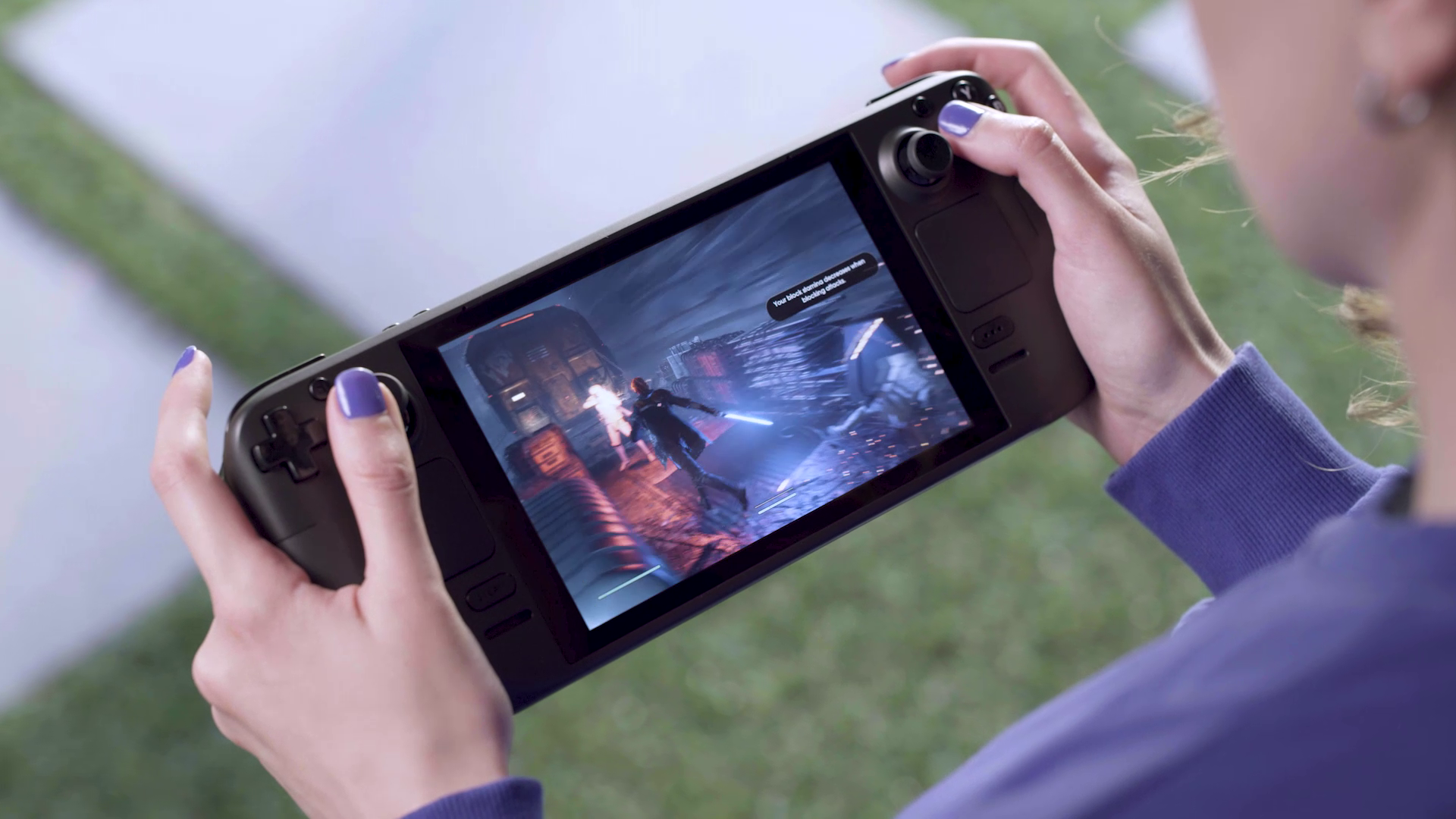Valve has not had great luck making hardware. The Steam Controller failed to revolutionize the controller scene despite its innovative design, the Steam Link worked well but was muscled out by a less-impressive app, and the ballyhooed Steam Machines basically faceplanted right out of the gate. The Index is an impressive unit, but hasn’t sparked a meaningful uptick in VR adoption since its release.
We said earlier this month that Steam Machines could be seen as a cautionary tale for early proponents of the Steam Deck, Valve’s upcoming handheld gaming device. But in an interview with IGN, Valve designers Greg Coomer, Lawrence Yang, and Scott Dalton took a different perspective, saying that the lessons learned from those earlier units were instrumental in making the Steam Deck possible.
“Steam Deck feels like the culmination of a lot of that earlier work,” Coomer said. “Steam Link has proven really valuable in establishing what it means to stream games from PCs. The Steam Controller was really valuable, it taught us a lot about what’s necessary and valuable to a customer. So all those earlier products really feel like they’ve informed this one.”
One of the biggest obstacles facing Steam Machines, Dalton said, was the “chicken and egg problem” of games: Valve was trying to push into gaming on Linux (Steam Machines were Linux-based), but developers were reluctant to port their games to the OS without a critical mass of users, while gamers weren’t inclined to make the switch because there weren’t enough games. That’s what prompted Valve to create Proton, a compatibility layer that enables Windows-based games to run on Linux. It works very well, and it means that relying on ports is no longer an issue.
That’s not actually great news for Linux diehards who want ports, as we saw earlier this week when a planned port of A Total War Saga: Troy was dropped because there’s no real call for it anymore. But it’s a major part of Valve’s plan to achieve mainstream success for the Steam Deck.
“It was really important for us to be able to talk directly to developers and say, hey, look, the Steam Deck runs your game,” Yang said. “You don’t have to port.”
“Steam Machines was a really good idea,” Coomer said. “The operating system wasn’t quite there, the number of games you could play on the system wasn’t quite there. Really, we’ve looked at a lot of what we’ve learned as boxes that we needed to check if we were ever going to talk to customers again about that category. We didn’t really want to bring this device to customers until we felt it was ready and that all those boxes were checked, essentially. But definitely, doing that, I don’t think we would have made as much progress on Steam Deck if we hadn’t had that experience.”
A healthy library of games does seem like a pretty important feature for a gaming device, and Valve says that the Steam Deck has so far handled every game thrown at it, including games released this year. Whether that translates into success where Steam Machines failed remains to be seen, and one potential stumbling block could be supply issues: Steam Deck reservations are currently only available in the US, UK, EU, and Canada, yet the 64GB and 512GB units aren’t expected to be available until sometime “after Q2 2022,” a full year from now.


